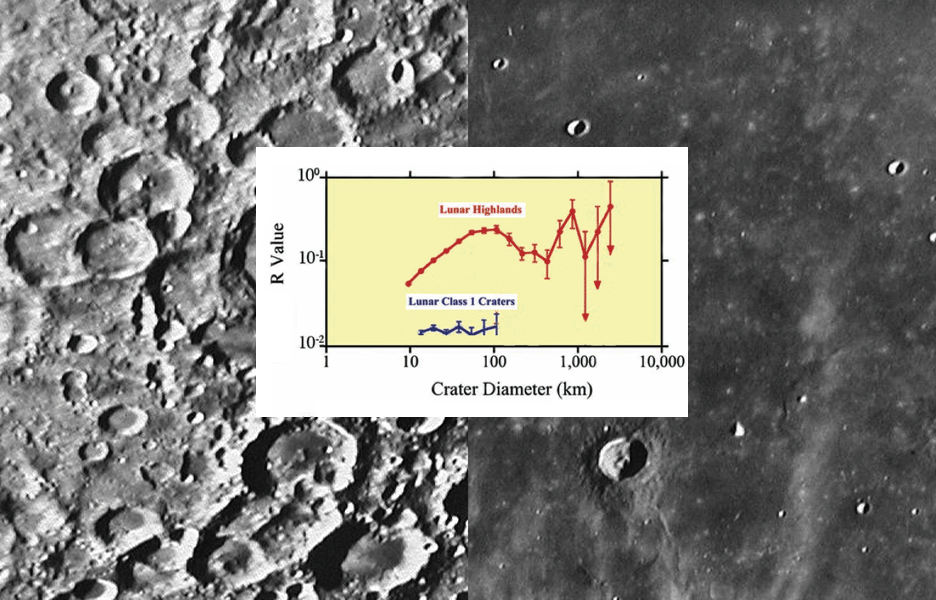
images from Consolidated Lunar Atlas, graph modified from Science magazine
The ancient lunar highlands are heavily cratered with both large and small craters. In contrast, the maria are sparsely cratered, and most craters are small. This is evidence that the rate of impact cratering was very high early in lunar history and had declined tremendously by the time of maria emplacement about 3.5 to 3.0 billion years ago. But where did the projectiles come from that made these impact craters? Bob Strom and colleagues at the Lunar and Planetary Lab in Tucson have counted the number of craters of differing sizes that are old appearing (red line – lunar highlands) and that are youthful (blue – lunar class 1 craters). The horizontal axis plots the diameters of counted craters and the vertical axis gives the relative abundance of each diameter grouping. The red line is higher on the graph than the blue one – graphically confirming what our eyes tell us; there are many more old craters than young craters at each diameter interval. But the shapes of the two distributions differ. For young craters the relative distribution is nearly flat, but the old craters have hills and peaks. Strom and his colleagues discovered that the diameter distribution of asteroids has the same shape as the red line. This means that the ancient cratering of the Moon was produced by material of all sizes from the main asteroid belt. The blue line’s shape is matched by the diameter distribution of Earth-approaching asteroids. These are asteroid fragments that are selectively ejected from the main asteroid belt, and due to the effect of solar radiation (Yarkovsky effect) there are more small projectiles than big ones. Interestingly, old craters on all the inner planets have distributions similar to the lunar highlands, and younger craters have shapes like lunar class 1 craters. This means that the entire inner solar system has been cratered by the same processes and from the same source regions and at the same time.
Technical Details:
Moon images from Consolidated Lunar Atlas: Highlands plate G12, mare C15. Graph simplified from Strom and others (2005).
Related Links:
Strom, RG and others (2005) The origin of planetary impactors in the inner solar system. Science 309, 1847-1850; Sept 16, 2005 issue.
Yesterday's LPOD: Highland (Sort of) Sinuous Rilles
Tomorrow's LPOD: Magical Bi-Color Moon
COMMENTS?
Register, Log in, and join in the comments.



